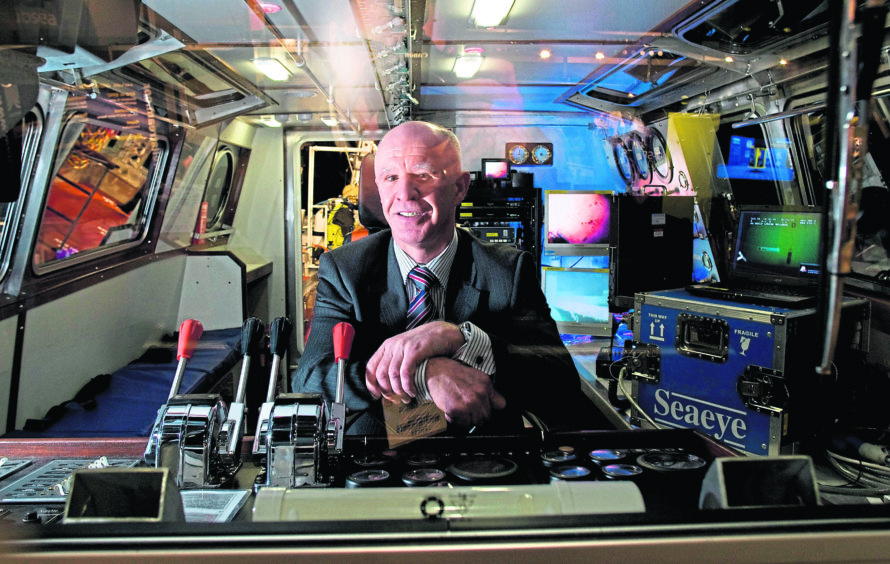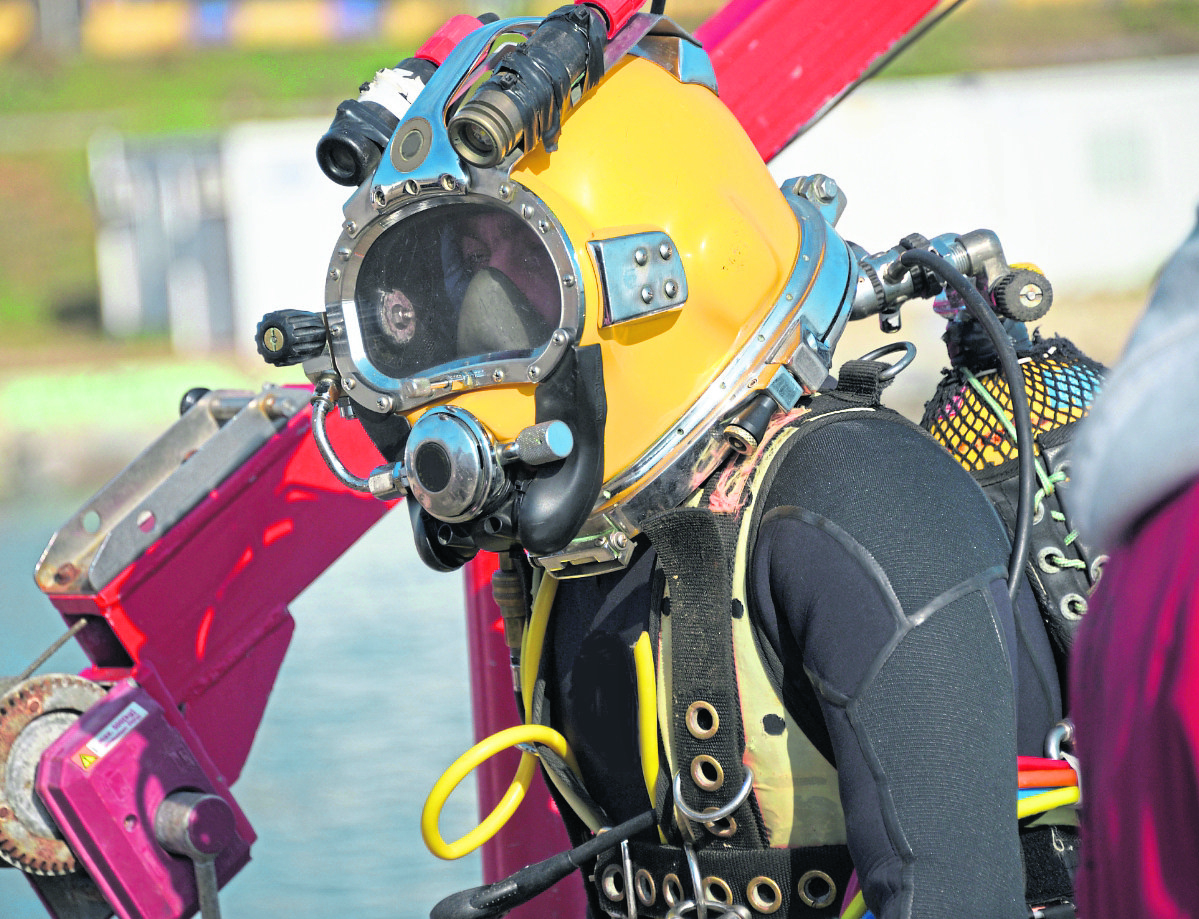
Reflecting on safety, diving contractor KD Marine’s managing director, Hamish Petersen, thinks back to a lecture at Aberdeen University around a decade ago titled “Is HSE going to be the end of the North Sea?”
It was delivered by the Health and Safety Executive and its message has stayed with Mr Petersen, who has led KD Marine over its 30 years in business.
He said: “We were shown a really good slideshow about a circus act. This trapeze artist came and jumped out on the trapeze, then someone put up a balloon which said ‘at work’. Someone then came along with a clipboard saying ‘risk assessment’. Someone came along with PPE, putting a helmet and gloves and overalls and boots on her. Then somebody came along and said ‘ah, working at height’.
“She was in harnesses, safety nets, all kinds of stuff and it became ridiculous. He (HSE director) said, ‘We didn’t tell you to do anything like that, you did this to yourselves’.”
In the 30 years of running KD Marine, many practical aspects of the offshore diving industry have not changed – nature and the physiology of humans, after all, is a constant.
And Mr Petersen puts a lot of faith in the skills of his workers and trained individuals in the wider sector to ensure proper safety standards are met.
Picking up the slideshow story, he continued: “There was a bit of knockback from the audience who asked, ‘well, can you tell your inspectors that? Because they beat us over the head, expecting to know what measures we’ve taken’.
“But often the mitigation is the skilful individual – and that was the trapeze artist in that situation.
“If you imagine people like offshore scaffolders and divers, we’re all doing this all day, we don’t need somebody with a degree in safety to come and tell us how. He’s actually not a help, he’s a hindrance.”
In his time in the offshore sector, he has seen the introduction of the Health and Safety at Work Act, which Mr Petersen has high praise for along with strides in technology which have helped improve operations for divers.
There has also been the rise of safety as an “industry” all of its own, which Mr Petersen described as a “pain” for a high-hazard sector like offshore diving.
Certain executives with less experience in the field may have a different opinion, he said, but for those that “hear it, see it, smell it”, safety remains the top job either way.
He said: “Our people manage those risks all day every day, they just do it because it is part of what they do.
“However you’ve now got the safety industry with trained safety professionals, who don’t know anything about what we actually do, who query all the things we do naturally and want to justify it in some kind of traceable piece of paper and that has become an industry in its own right.
“Nothing has changed about the diver – nature doesn’t change and the human physiology doesn’t change, he still has to breathe.
“And a lot of the work remains fairly simple – bolts in holes, lining things up, lifting things in, digging them out again. All those tasks remain largely the same.
“What has changed is the TV monitoring systems and the communications equipment, it is a very specifically designed piece of kit now, and that has been a big thing.
“The control of the ships, the dynamic positioning of the ships is now all computer-based.
“Ships have become like aircraft, they have highly sophisticated control systems in there and not just a man standing at the wheel.”
Despite the efforts of skilled crew and strides in technology, incidents do of course happen.
A notable recent incident was in 2012 when a Bibby Offshore diver became trapped on the seabed and was cut off from his air supply, seen in a film released this year titled, “Last Breath”.
Miraculously, diver Chris Lemons survived the incident despite spending nearly 40 minutes at the bottom of the North Sea after his umbilical snapped when he became tangled on a subsea structure.
It occurred due to a bug in the dynamic positioning (DP) technology, which works to maintain a vessel’s exact position on the surface.
DP removes the need for anchors and allows excellent manoeuvrability, but Mr Petersen said this goes to show that new technology brings its own set of challenges.
He said: “On that (Bibby) Topaz incident, the system decided it was going to have a hiccup, it took off, the diver happened to be on the seabed at the time and he got tangled in an obstruction.
“There is a huge amount of contingency planning needed.
“The industry became very complacent and reliant on these DP systems. They became very reliable.
“Technology brings with it unseen hazards.
“The team did everything correctly and they used a lot of the technology around them to resolve the problem they had.
“That was the skill of the people on the job that did that. As I understand it, the surveyor worked with the helmsman to re-track the ship to where it had moved away from manually, which is not an easy thing to do.
“It did highlight that there wasn’t an immediate skill set available to take manual control, which hasn’t been needed because it is an automatic system.”
Accidents, however, are rare according to Mr Petersen, who sees good things ahead.
KD Marine employs 18 people at its Aberdeen base and between 10 and 50 offshore.
The sector has been under pressure with the recent downturn but work is returning and with that, prices will have to come back up.
He said: “The maintenance programmes which were curtailed because of the downturn have now been reactivated.
“After three years of holding back there is now a wee backlog.
“But because the industry went through this downturn, the shelves are bare. We’ve lost a lot of skilled people and a lot of capacity.
“The problem is the oil industry is never sensitive to anything like that. It wants to turn it all back on when it decides.
“That has not yet resulted in a price increase, although it is influencing commercial decisions.
“You can’t hold the price down when demand starts to increase. That has to start changing.”
Recommended for you


